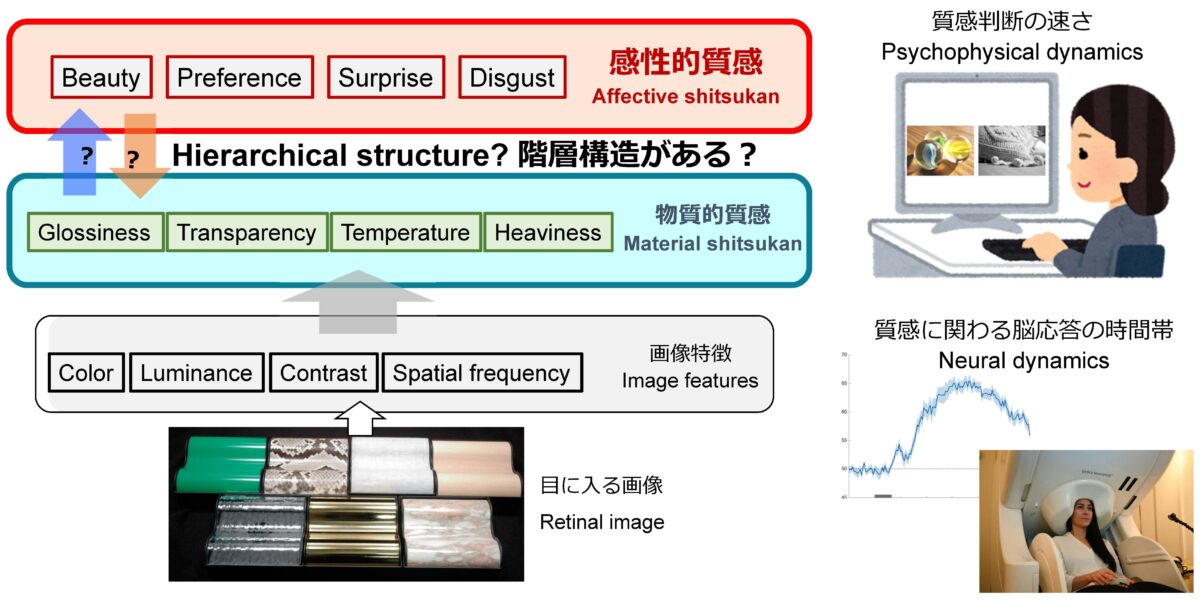D02-6 Modeling of hierarchical structures between material perception and affective impressions based on psychophysical and physiological temporal properties

When seeing objects, we perceive material properties (e.g., glossiness) and have affective impressions (e.g., preference) on them. Recent studies have revealed mechanisms in the visual system for perception of material qualities and states. However, the detailed flow of information processing from retinal images to material perception and affective impressions has not been well understood. We aim to elucidate the temporal relationships among image features, various material perception, and affective impressions in the visual system. In most previous studies, static experimental methods such as the semantic differential method have been employed to measure material perception and affective impression. However, it can only estimate the correlation between different types of perceptions. Therefore, we try to estimate the causal relationship between different types of perceptions relying on the temporal properties of the perceptual responses in psychophysical measurements (response time and influence of stimulus duration on perception) and neural responses measured with magnetoencephalography (MEG) or Electroencephalography (EEG). The goal of this study is to model the temporal and causal relationship between material perceptions and affective impressions.
